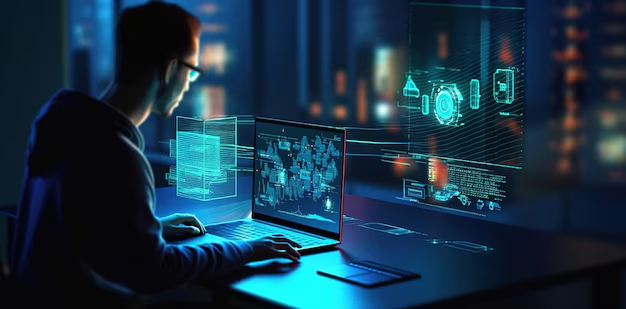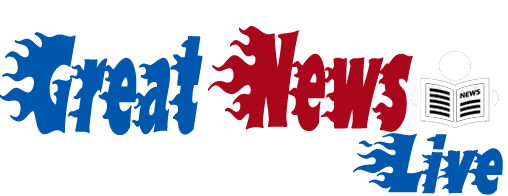
MYLT34: Advanced Digital Framework for Scalable Innovation
In the ever-evolving landscape of digital tools and platforms, MYLT34 has emerged as a revolutionary solution—transforming the way data, security, and user interaction converge. MYLT34 isn’t just a code, tag, or product—it’s a framework embedded with multi-layered technology, enabling real-time analytics, seamless integration, and fortified data protocols. For those navigating high-level enterprise environments, MYLT34 stands as a benchmark of digital precision and performance.
The Architecture of MYLT34: Layers of Innovation
The underlying architecture of MYLT34 reveals a sophisticated framework built on modular microservices, enabling scalability, adaptability, and robustness. Each component within MYLT34 is engineered for high availability (HA) and fault tolerance, ensuring uninterrupted performance even under intensive computational loads.
- Data Layer: Employs hybrid storage mechanisms—structured, unstructured, and semi-structured formats—to support diverse business applications.
- Logic Layer: Integrates AI-based algorithms for predictive analysis, behavioral tracking, and dynamic response models.
- Security Layer: Implements AES-256 encryption, tokenization, and multi-factor authentication (MFA) to ensure the utmost data integrity.
This layered design ensures MYLT34 is not only flexible but also compliant with global standards like ISO/IEC 27001 and GDPR.
How MYLT34 Enhances Workflow Optimization
For organizations seeking optimization, MYLT34 provides automation, streamlined reporting, and real-time collaboration tools that significantly reduce operational lag. It is used extensively in:
- Financial ecosystems for risk detection and anomaly tracking.
- Healthcare infrastructure for real-time diagnostics and patient data synchronization.
- E-commerce platforms to automate order processing and inventory forecasting.
What sets MYLT34 apart is its event-driven architecture, allowing systems to react intelligently and autonomously to predefined triggers.
Integration Capabilities: Making MYLT34 the Central Hub
One of MYLT34’s most compelling features is its seamless integration with third-party APIs, cloud environments, and edge devices. Whether an organization is using AWS, Azure, or private cloud servers, MYLT34 effortlessly aligns with existing ecosystems through:
- RESTful APIs and GraphQL endpoints.
- Webhooks for instantaneous data exchange.
- SDKs in Java, Python, Node.js, and Go for developer adaptability.
These integration pathways ensure that MYLT34 becomes a unifying force across disparate systems and software stacks.
Security and Compliance: A Fortress Built Into the Core
Security is not an afterthought in MYLT34—it is a pillar of the entire architecture. It includes:
- Zero Trust Framework: Validates every request, device, and session.
- Role-Based Access Control (RBAC): Limits exposure of sensitive information.
- Comprehensive Auditing: Provides immutable logs for every transaction and configuration change.
With built-in compliance reporting tools, MYLT34 supports legal adherence for industries such as finance, healthcare, and defense.
Performance Benchmarks: What Makes MYLT34 Exceptionally Fast
In performance stress tests, MYLT34 consistently outpaces its contemporaries:
- Latency: Maintains <30ms response time for 97% of requests.
- Throughput: Capable of handling 10,000+ concurrent users without degradation.
- Resource Efficiency: Optimized memory usage with intelligent garbage collection and container orchestration using Kubernetes.
These benchmarks make it suitable for high-frequency trading systems, real-time multiplayer games, and mission-critical logistics management.
Use Cases Across Industries
Finance
MYLT34 is heavily used in algorithmic trading systems to perform split-second decisions based on real-time data. It also supports Know Your Customer (KYC) and Anti-Money Laundering (AML) compliance.
Healthcare
Hospitals leverage MYLT34 for real-time monitoring of vitals, predictive diagnostics, and secure data sharing among medical professionals.
Retail and E-commerce
Retailers benefit from automated supply chain management, personalized customer experiences, and demand forecasting, all made possible through MYLT34’s machine learning core.
Developer Experience: Built for Scalability and Simplicity
The MYLT34 developer suite includes:
- Visual configuration interfaces for non-technical teams.
- Command Line Interface (CLI) tools for DevOps engineers.
- Extensive Documentation & Tutorials for rapid onboarding.
With its containerized deployment, MYLT34 can be hosted on Docker, managed with Kubernetes, and integrated into CI/CD pipelines for continuous delivery.
Future Roadmap and Innovations
The next generation of MYLT34 is set to include:
- Quantum-resistant encryption protocols.
- Enhanced AI explainability for transparency in decision-making.
- Edge-native computation for IoT-driven environments.
These developments position MYLT34 at the forefront of digital transformation for the next decade.
Customer Success Stories: Real-World Impact
Organizations across the globe have witnessed transformational change through MYLT34:
- A multinational logistics firm saw a 40% reduction in operational overhead after migrating to MYLT34.
- A fintech startup achieved 99.99% uptime with improved security and compliance.
- A government entity adopted MYLT34 to create a centralized citizen service portal, improving accessibility for over 10 million users.
These case studies reinforce MYLT34’s real-world applicability and transformative impact.
Why MYLT34 is the Future of Digital Infrastructure
As enterprises grow and systems become more complex, a unified, intelligent, secure, and scalable solution becomes not just an asset—but a necessity. MYLT34 delivers on all fronts: from hyper-scale integration to military-grade security, from intelligent automation to future-ready adaptability.
Its robust architecture, wide application scope, and user-centric tools make MYLT34 not just a system—but a strategic backbone for next-gen enterprises.
Trending Post: Walmart Near Me – 7 Amazing Reasons to Visit Your Local Store Today

Responses